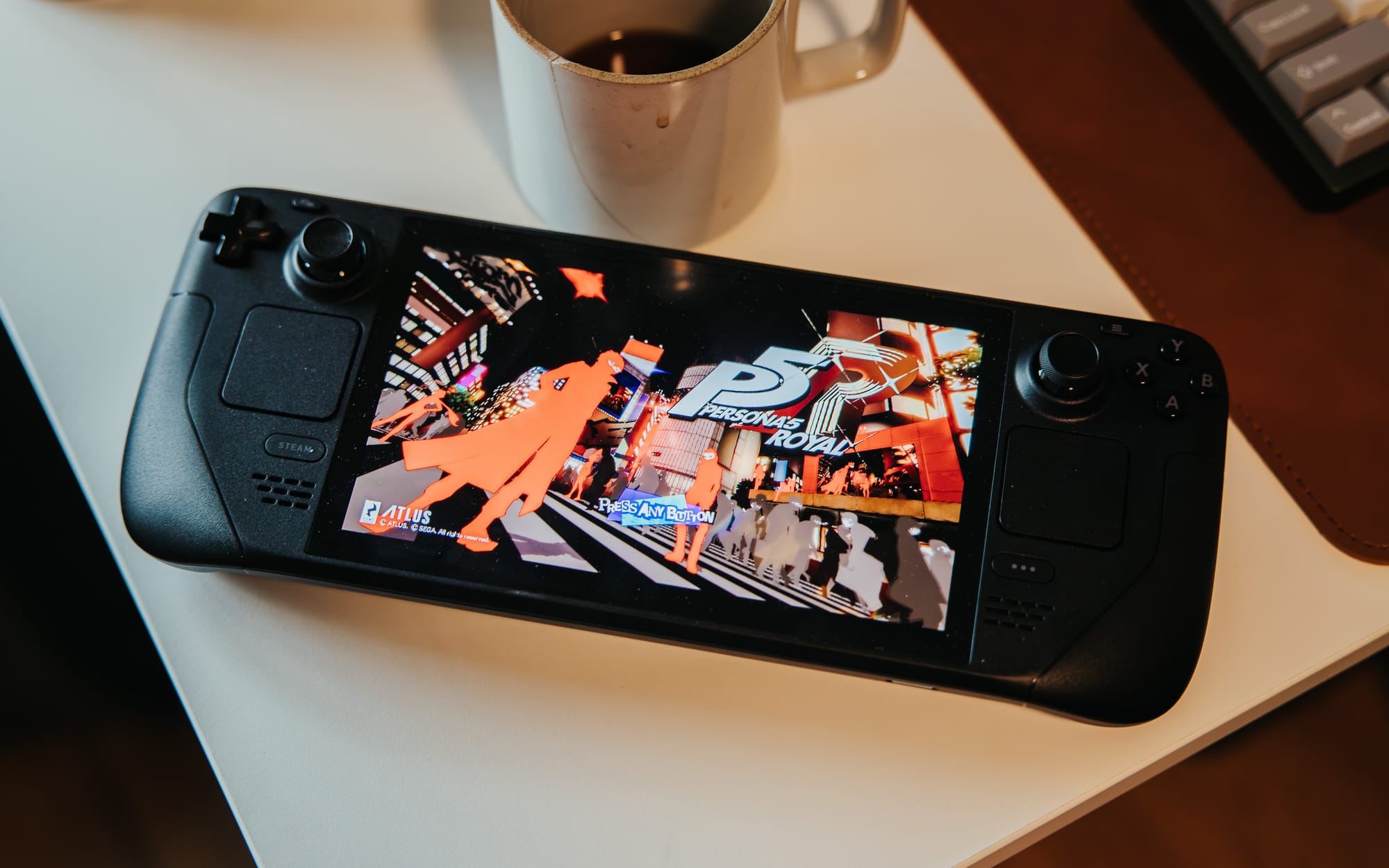My review of the Steam Deck OLED

Valve came out of nowhere last month and announced a new OLED version of the Steam Deck (my favorite product of 2022), and this new announcement seemed like a pretty mild upgrade based on Valve's messaging. Basically, they made it sound like the Nintendo Switch OLED update, which was the same Switch in almost every way, but with an OLED screen (there were some more minor changes, but you got it for the screen). It was only once reviewers started sharing their thoughts that we realized this was more of an upgrade then Valve was letting on; a rare case of underpromising and overdelivering in the tech space.
For goodness sake, watch the first 30 seconds of Digital Foundry's review to see Richard Leadbetter genuinely giddy with excitement about the product!
This isn't a super technical blog obsessed with specs, nor is it a gaming blog, so I'll leave those details to other folks, but I wanted to mention the things that stand out to me as someone who used the original Steam Deck daily for over a year before getting this OLED model.
The OLED screen is legit
True to its name, the OLED screen is absolutely the star of the show in this upgrade. Here's me talking about my one complaint with the original Steam Deck:
My one real complaint about the Steam Deck is the display, which is 800p (fine for the size), but is a really poor LCD display that simply doesn't look as good as we're used to in portable devices today. The one big advantage the Switch OLED has is it's screen, which looks so much better than the Steam Deck's washed out screen.
This was maybe being too nice to the display on the first Steam Deck: it was horrendous. It was actively bad, and was genuinely probably the worst display I've seen on a modern tech product in 5-10 years. The best think I could say about it was that it was able to drop to a native 40Hz refresh rate, which gave it a good way to play games are reasonable settings and with consistent frame times for games that couldn't hit 60fps.
This new OLED screen is not just good compared to the original Steam Deck, it's spectacular compared to any screen in this class. It has incredible color reproduction, supports true HDR with 1,000 nits max brightness in HDR content, and it's been upgraded to 90Hz, allowing games to run super smooth and input latency to be even better. As one example of how this makes things better, you can still lock your frame rate to 40fps, but the screen will now refresh at 80Hz so that your inputs get updated twice as often as they would have in the old model.
Another cool thing about how SteamOS works is that HDR "just works" here in a way it simply doesn't on Windows. I have an HDR-capable monitor that I use for my PC gaming, and I sadly just turn HDR off most of the time there since it doesn't reliably work well, often making games look worse than SDR. I'm happy to say that HDR works wonderfully on the Steam Deck, and it looks eye-searingly delightful.
How much of a difference this makes to you is going to be variable, but I have to say that it's really made the whole package feel notably better to me every time I pick it up.
The fans
One of the things that made the Steam Deck a little annoying to use were the fans; specifically, the fan noise. I've grown accustomed to playing the Switch on the couch next to my wife while we watch TV or just relax, and it's not distracting when I have the sound muted. Not the case with the original Steam Deck, which made so much fan noise when playing many games that she would occasionally look over and as, "is that thing okay?!"
The fans in the new Steam Deck are not as quiet as the Switch, but they're miles better than the original Deck, and it's completely negated the above issue. Bravo!
Wi-Fi goes to 6E
This seems like a small thing, but the upgrade from Wi-Fi 5 in the first Deck to 6E in the new one is huge. My games download reliably faster than before, and that especially makes a big difference when it turns out you need to install a required update to a game when you sit down to play it. Any time saved there is great, and improved latency for online gaming is a nice bonus.
Stares directly at the PlayStation Portal, which is a streaming-only device and still has Wi-Fi 5 even in the year of our lord 2023.
Better battery
The battery is slightly bigger, which helps with battery life, and they've moved to a smaller process (6nm down from 7nm) for their SOC, which improves efficiency as well. I don't have any numbers here, but I will say that the OLED Steam Deck definitely gets noticeably more battery life than I'm used to. It's not game-changing and it's not as good as the Switch, but it's not embarrassing as it used to be.
Marginally better performance
Another thing I can't measure specifically, so I'll again reference Digital Foundry's testing here, but games do run a little better than before. It's probably like 10-20% most of the time, which isn't huge, but sometimes takes games from barely playable to actually kinda solid. Combine this slight raw performance improvement and bundle it with improved input latency and quieter fans, and that 10% raw performance boost can feel more significant than it sounds.
Additionally, for older and lower-intensity games that can now run at 90fps instead of 60fps on the old one, this is a genuine 50% performance boost. I played some Half Life 2 which easily runs at 90fps with max settings on the Deck and it feels wonderful.
More storage
A minor thing maybe, but the new Steam Deck comes in 512GB and 1TB storage options. They've also eliminated the 64GB model from the website and the non-OLED model (aka the original Deck) now has a 256GB SSD built in and costs the same as the 64GB model did a few weeks ago. Nice.
Final thoughts
As with all tech products on yearly or semi-yearly update cycles, I certainly don't think everyone with a first generation Steam Deck needs to go out and get one of these. These aren't cheap pieces of kit, even though they do give you a lot of bang for your buck, but the raw dollar amounts are still significant and different budgets will accommodate different spending habits. That said, I think almost anyone who upgrades to this new model will be quite happy and they'll notice the improvements right away.
For anyone who has not bought a Steam Deck yet and is thinking about getting the Steam Deck OLED, I think you'll be impressed how well the product manages to bring a lot of the benefits of a console experience to what is fundamentally a PC gaming device. Everything works really seamlessly, and you don't have to fiddle with any of the weird bits you sometimes have to deal with on a gaming PC. But if you want to do more with the system and pushing it beyond its normal use case, you can do that too! There's a full on Linux desktop environment you can boot into with a couple taps and do whatever you want from there. For example, the Deck doesn't support emulation or Xbox Game Pass, but people have come up with pretty user-friendly (for nerds) ways of getting those running really well.
The Steam Deck OLED gets my highest recommendation, and is a great way to play the massive array of PC games anywhere. It's a fantastic piece of kit from top to bottom.
